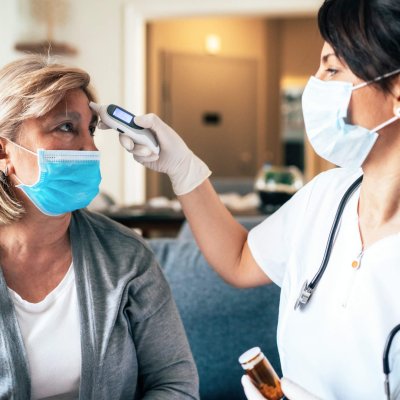Synopsis: The number and frequency of global infectious pandemics is increasing. While the current SARS-CoV-2 virus and COVID-19 disease pandemic has been the most widespread and crippling in recent history, it will certainly not be the last in many of our lifetimes.
COVID-19 has exposed serious inadequacies in the ability of world society, the medical community, and the medical supply industry to robustly and flexibly respond and adapt to a rapidly-spreading respiratory disease, especially when a large (and even currently, unknown) proportion of disease carriers remain asymptomatic.
Traditional social distancing, testing and quarantining, and waiting for both herd immunity and vaccination capabilities to develop are effective over a 3 to 18-month period. However, in their current iterations, they are far too slow, challenging to implement, socially-disruptive, and fraught with the peril of resurgent disease when lifted to be used solely as long-term management strategy.
A more proactive, adaptable, and universal strategy is required to prevent recurrent, massive human suffering, death, and social and economic disruption. Rapid, accurate, home-based testing, coupled with advanced technological contact tracing via cell phone data have been proposed, but still face developmental, validation, and privacy-rights hurdles.
Our healthcare system’s ability to address and adapt quickly and flexibly to novel infectious disease has also been sorely tested. To keep patients and providers safe and healthy, and preserve a weakened personal protective equipment (PPE) supply chain, a radical, unprecedented, and widespread shutdown of all elective patient care in Washington State and elsewhere was undertaken. This placed many patients in situations of severe, unrelieved pain, untreated disease states, undiagnosed conditions that might prove severe or even fatal, or diagnosed conditions that might prove harder to treat when left to an unknown future date. In addition, the financial ramifications of such a shutdown on the US healthcare sector, which accounts for 18% of US GDP (2016), are staggering.
In such a crisis, there is an understandable desire to look immediately for rapid testing, effective medical treatment, development of herd immunity, and an eventual vaccine as the ultimate (and historically effective) solution to allow a return to more normal patient care. We would propose that while these measures are indeed essential and should be aggressively pursued, they do not address the basic challenge that we are seemingly entering a “new normal:” the “era of pandemics.” Unless a proactive, effective, and permanent change in our healthcare delivery system is undertaken, global society and the healthcare community will recurrently need to undertake the same draconian and crippling measures.
We propose that there exist (relatively) simple, scientifically-validated measures that can be undertaken to alter our care delivery process, which can both address easing of restrictions for elective care in the current crisis, but also proactively allow for prevention of disease spread during the next crisis. These include:
- Defining tiered levels respiratory infectious disease threat (RIDT);
- Correlated levels of universal precautions, and PPE use;
- Social distancing practices in healthcare facilities based on RIDT levels;
- Ongoing promotion of widespread personal and facility sanitization practices;
- Eventual use of patient and provider disease testing as a qualifying factor in treatment algorithms
- ONLY when an effective test is available that can accurately prove the recipient either capable or incapable of transmitting disease.
These straightforward measures, if properly implemented, will allow for safe, progressive increases in elective patient care in both current and future crises.
Furthermore, using a “tiered-threat-level” system allows for adaptability of care process based upon existing pandemic/epidemic characteristics, and thus can operate at a less stringent level in times of epidemiological calm.
By not relying heavily on imperfect and evolving testing regimens, or time-consuming development of treatments and vaccines, these measures also allow for much more rapid initial response to future infectious disease hazards.
For the full blueprint, please download the pdf: Elective Patient Care and Surgery in the Era of Pandemics: A Blueprint for Responding and Recovering from SARS-CoV-2 and COVID-19, While Preparing for the Future.
In the setting of the current COVID-19 pandemic, it is critical to our patients’ health and successful surgical outcomes to avoid COVID-19 infection after surgery. To obtain a copy of full document, please download the pdf: Provider-Patient COVID-19 Health and Social Responsibility Collaboration.
More About Our Response to COVID-19

COVID-19
Proliance Virtual Visits







